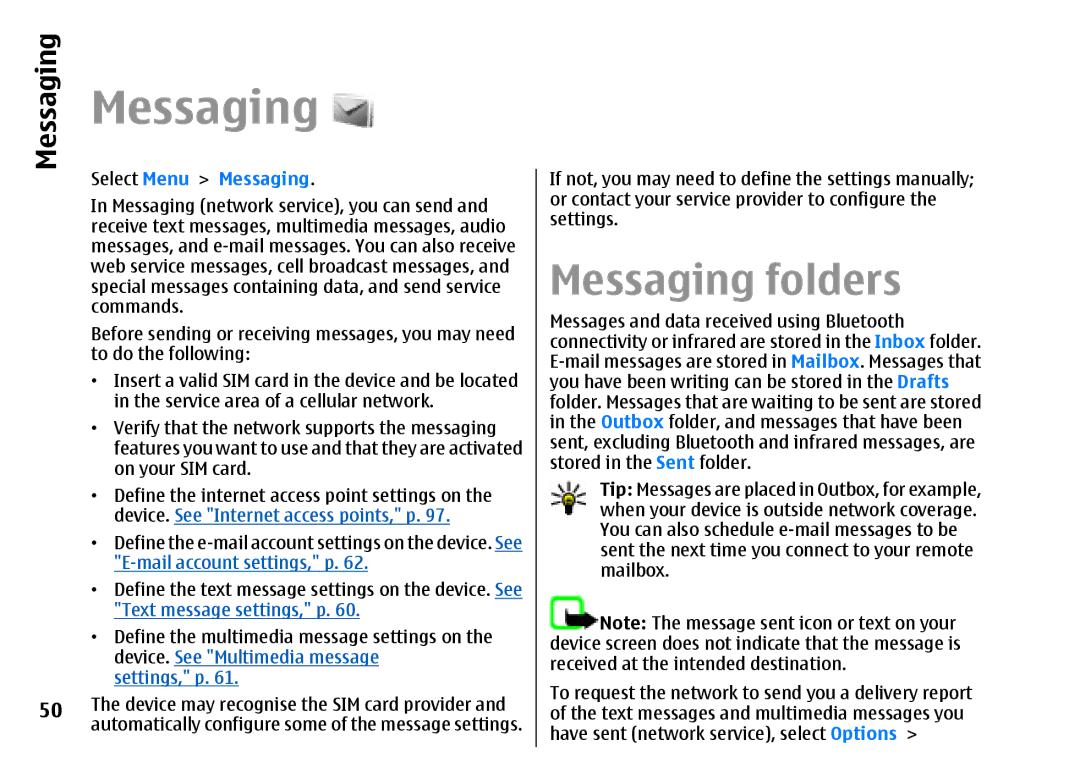Messaging
50
Messaging 
Select Menu > Messaging.
In Messaging (network service), you can send and receive text messages, multimedia messages, audio messages, and
Before sending or receiving messages, you may need to do the following:
•Insert a valid SIM card in the device and be located in the service area of a cellular network.
•Verify that the network supports the messaging features you want to use and that they are activated on your SIM card.
•Define the internet access point settings on the device. See "Internet access points," p. 97.
•Define the
•Define the text message settings on the device. See "Text message settings," p. 60.
•Define the multimedia message settings on the device. See "Multimedia message
settings," p. 61.
The device may recognise the SIM card provider and automatically configure some of the message settings.
If not, you may need to define the settings manually; or contact your service provider to configure the settings.
Messaging folders
Messages and data received using Bluetooth connectivity or infrared are stored in the Inbox folder.
Tip: Messages are placed in Outbox, for example, when your device is outside network coverage. You can also schedule
![]() Note: The message sent icon or text on your device screen does not indicate that the message is received at the intended destination.
Note: The message sent icon or text on your device screen does not indicate that the message is received at the intended destination.
To request the network to send you a delivery report of the text messages and multimedia messages you have sent (network service), select Options >
